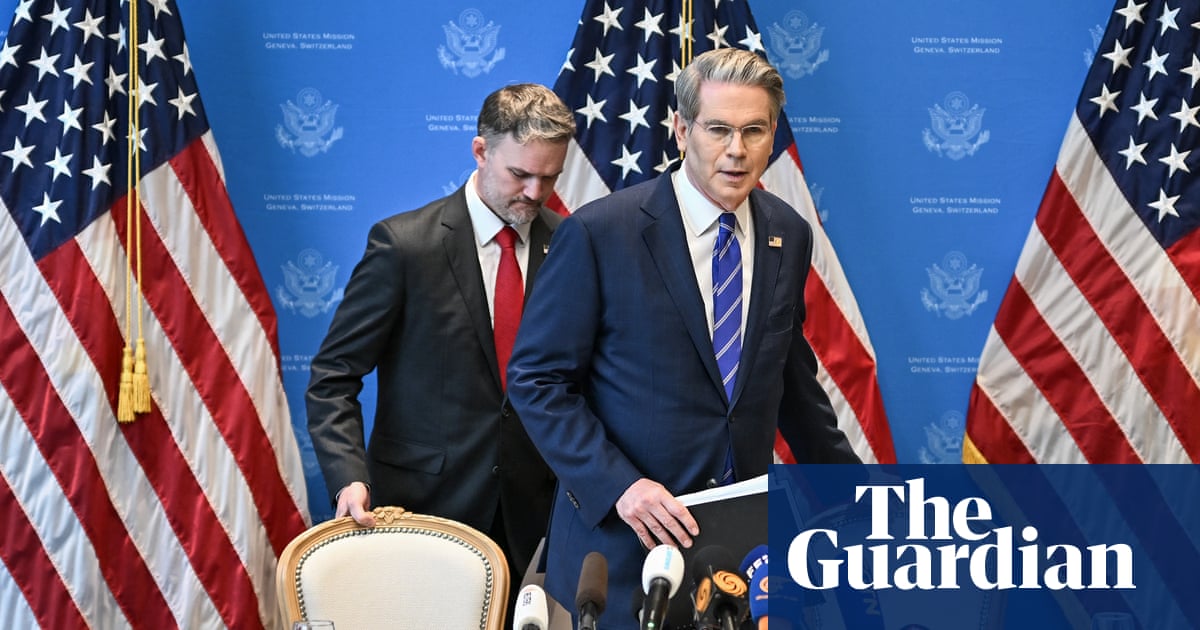China and the US have agreed a 90-day pause to the deepening trade war that has threatened to upend the global economy, with reciprocal tariffs to be lowered by 115%.
Speaking to the media aftertalks in Geneva, the US treasury secretary, Scott Bessent, said both sides had shown “great respect” in thenegotiations.
Bessent said: “The consensus from both delegations this weekend was neither side wants a decoupling”.
The 90-day lowering of tariffs applies to the duties announced byDonald Trumpon 2 April, which ultimately escalated to 125% on Chinese imports, with Beijing responding with equivalent measures.
China also imposed non-tariff measures, such as restricting the export of critical minerals that are essential to US manufacturing of hi-tech goods.
The US trade representative, Jamieson Greer, said China’s retaliation had been disproportionate and amounted to an effective embargo on trade between the world’s two biggest economies.
With the 115% deduction, Chinese duties on US goods will be lowered to 10%, while the US tax on Chinese goods will be lowered to 30%. That is because the US tariffs include a 20% rate imposed by Trump before the latest trade war, which the president said was related to China’s role in the US’sfentanyl crisis. The fentanyl-related tariff will still apply.
A spokesperson for China’s ministry of commerce said: “This move meets the expectations of producers and consumers in both countries, as well as the interests of both nations and the common interest of the world.
“We hope that the US side will, based on this meeting, continue to move forward in the same direction with China, completely correct the erroneous practice of unilateral tariff hikes, and continually strengthen mutually beneficial cooperation.”
China’s yuan jumped to a six-month high on the signal that the trade war would be paused. Up to 16m jobs wereat risk in China, according to some estimates, while the US faced rising inflation and empty shelves thanks to dizzying tariffs on the biggest supplier of US goods.
Bessent said he was impressed by the level of Chinese engagement on the fentanyl issue during the talks in Switzerland. “For the first time the Chinese side understood the magnitude of what is happening in the US,” Bessent said.
Ajoint statementpublished by the US and China on Monday said that both sides would “continue to advance related work in a spirit of mutual openness, continuous communication, cooperation and mutual respect”.
William Xin, the chair of the hedge fund Spring Mountain Pu Jiang Investment Management, told Reuters: “The result far exceeds market expectations. Previously, the hope was just that the two sides can sit down to talk, and the market had been very fragile. Now, there’s more certainty. Both China stocks and the yuan will be in an upswing for a while.”
Sign up toBusiness Today
Get set for the working day – we'll point you to all the business news and analysis you need every morning
after newsletter promotion
Hu Xijin, the former editor of the nationalist Chinese tabloid the Global Times, said on social media the agreement was a “great victory for China in upholding the principles of equality and mutual respect”. Hu noted on Weibo that the recently agreedUK-US trade dealmaintained the US’s 10% tariff on UK imports, “while the UK did not implement reciprocal measures”.
Wang Wen, the head of the Chongyang Institute for Financial Studies at Renmin University in Beijing, said: “This is an unexpected achievement in Sino-US tariff negotiations.”
But Wang also urged caution, as he said the agreement “does not represent the resolution of the structural contradictions between China and the United States, nor does it mean that there will be no friction and serious differences between China and the United States in the future”.
Stock markets across Europe rose in the aftermath of the US-China announcement. Germany’s DAX index jumped by 1.5%, with Mercedes-Benz, Daimler Trucks and BMW among the biggest risers. France’s CAC index rose by 1.2%.
Additional research by Lillian Yang
